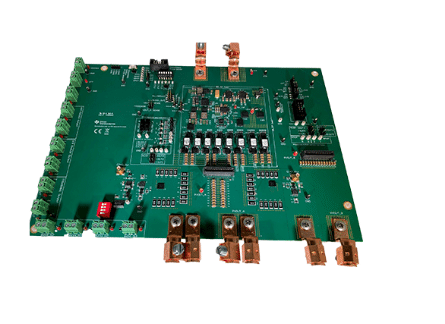This reference design offers a scalable, compact, and programmable power solution tailored for today’s high-performance FPGAs, ensuring efficiency, flexibility, and robust operation across demanding industrial and medical applications.

As modern field-programmable gate arrays (FPGAs) continue to evolve with increasingly sophisticated processing capabilities, they demand a greater number of power rails with tighter voltage and sequencing requirements. To address these needs, this reference design integrates a compact and efficient power architecture using a combination of a dual-channel controller, a highly configurable PMIC, and a versatile power module. The design targets high-reliability applications in defense, medical imaging, and industrial instrumentation.
The TIDA-010241 design by Texas Instruments (TI)has the TPS53688, a dual-channel DCAP+ controller with a 6+2 phase configuration designed to supply both the core and secondary power rails of an FPGA. It supports dynamic voltage scaling through PMBus and VR13.HC SVID protocols, ensuring flexible real-time performance tuning. This controller handles high-current, low-voltage outputs, making it an ideal fit for core FPGA power rails.
For power sequencing and the provisioning of multiple voltage rails, the TPS650861 PMIC is employed. This highly integrated device supports six independent power rails, including three controllers capable of sourcing up to 20 A and three converters for up to 3 A. The PMIC also includes a built-in VTT regulator specifically for DDR memory, enabling full platform support. With one-time programmable (OTP) memory, output voltages and sequencing order can be preset for startup, while an I²C interface allows for post-deployment configuration updates.
To deliver the necessary current for accessory and system rails, as well as the 5 V intermediate rail needed by the TPS650861, the design incorporates the TPSM5D1806 power module. This compact module supports either two 6-A outputs or a single 12-A multiphase output, depending on the system’s requirements. Its modular form factor significantly reduces overall solution size without compromising power density.
The components used in this design are particularly suitable for applications with stringent space and performance constraints. Key use cases include radar systems, electronic warfare units, software-defined radios, and medical imaging platforms such as MRI, CT/PET scanners, X-ray equipment, and ultrasound devices. Additionally, this design is ideal for semiconductor testing environments, oscilloscopes, and digitizers, where precision and reliability are essential.
TI has tested this reference design. It comes with a bill of materials (BOM), schematics, assembly drawing, printed circuit board (PCB) layout, and more. The company’s website has additional data about the reference design. To read more about this reference design, click here.

